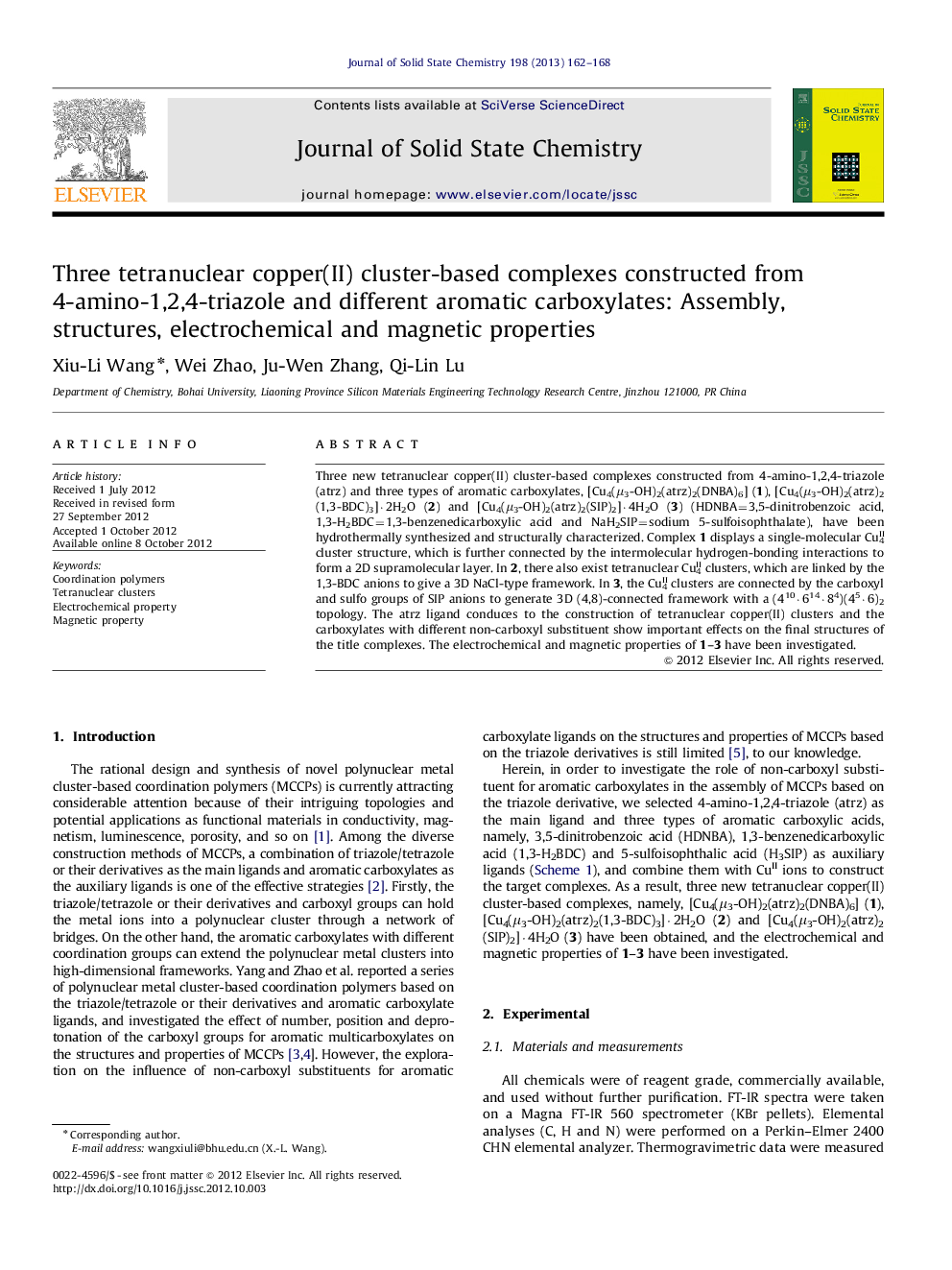| Article ID | Journal | Published Year | Pages | File Type |
|---|---|---|---|---|
| 1331377 | Journal of Solid State Chemistry | 2013 | 7 Pages |
Three new tetranuclear copper(II) cluster-based complexes constructed from 4-amino-1,2,4-triazole (atrz) and three types of aromatic carboxylates, [Cu4(μ3-OH)2(atrz)2(DNBA)6] (1), [Cu4(μ3-OH)2(atrz)2(1,3-BDC)3]·2H2O (2) and [Cu4(μ3-OH)2(atrz)2(SIP)2]·4H2O (3) (HDNBA=3,5-dinitrobenzoic acid, 1,3-H2BDC=1,3-benzenedicarboxylic acid and NaH2SIP=sodium 5-sulfoisophthalate), have been hydrothermally synthesized and structurally characterized. Complex 1 displays a single-molecular CuII4 cluster structure, which is further connected by the intermolecular hydrogen-bonding interactions to form a 2D supramolecular layer. In 2, there also exist tetranuclear CuII4 clusters, which are linked by the 1,3-BDC anions to give a 3D NaCl-type framework. In 3, the CuII4 clusters are connected by the carboxyl and sulfo groups of SIP anions to generate 3D (4,8)-connected framework with a (410·614·84)(45·6)2 topology. The atrz ligand conduces to the construction of tetranuclear copper(II) clusters and the carboxylates with different non-carboxyl substituent show important effects on the final structures of the title complexes. The electrochemical and magnetic properties of 1–3 have been investigated.
Graphical abstractThree tetranuclear copper(II) cluster-based complexes based on different carboxylates have been synthesized under hydrothermal conditions. The carboxylate anions play a key role in the formation of three different structures.Figure optionsDownload full-size imageDownload as PowerPoint slideHighlights► Three new tetranuclear copper(II) cluster-based complexes have been obtained. ► The atrz conduces to the construction of tetranuclear copper(II) clusters. ► Carboxylates show important effect on the structures of title complexes. ► Magnetic properties and electrochemical behaviors have been reported.
